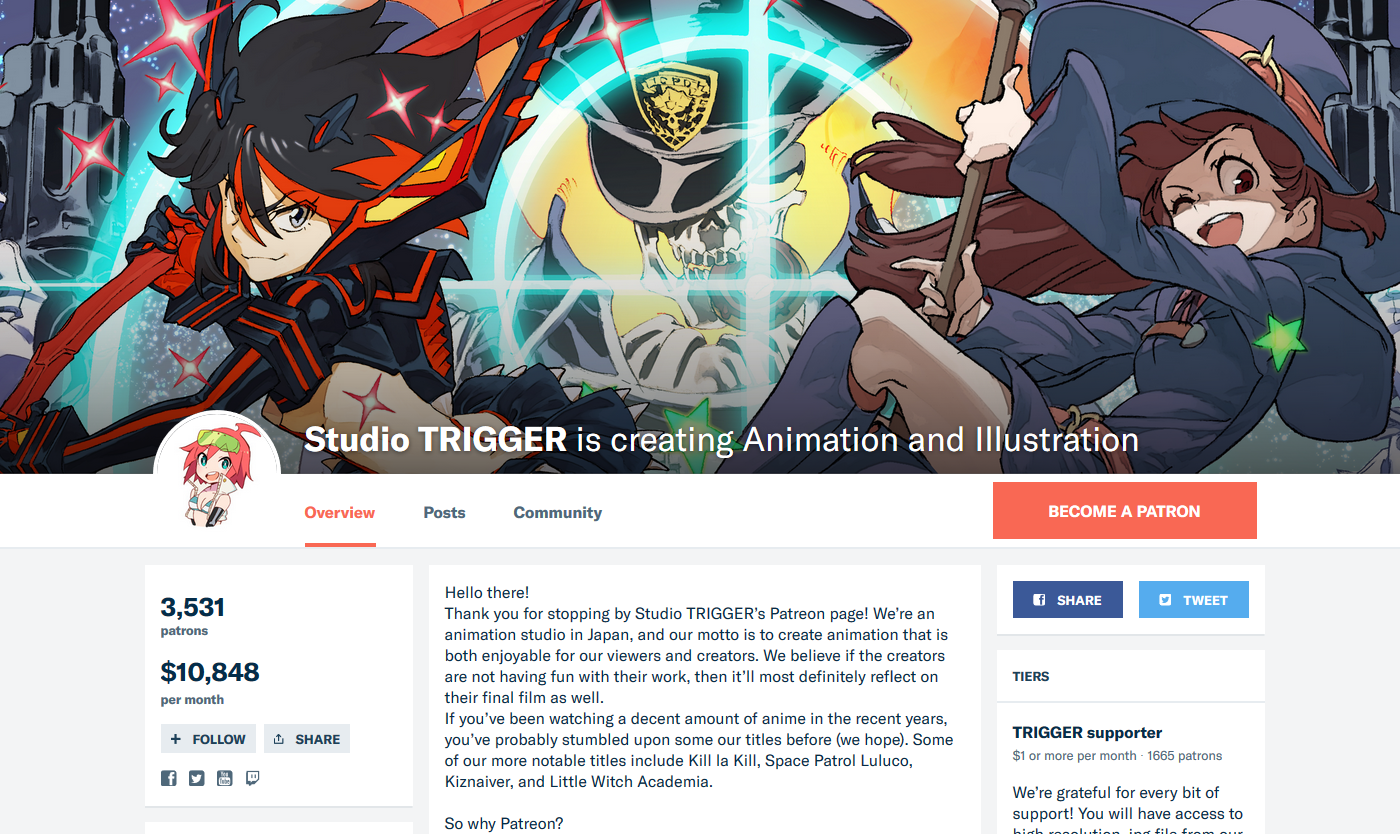Much has been said about the poor working conditions and low pay for animators at some of the major studios in the industry, and many conscientious anime fans want to do what they can to help remedy that situation. As a result, when people talk about “supporting the anime industry,” they’re usually taking about financially supporting the studios that make the anime.
The problem is: The “anime industry” is much bigger than just the studios.
The Association of Japanese Animators puts out a report on the anime market each year. In it, they compile information, statistics, and figures, producing a comprehensive report on market trends throughout the previous year.
In it they include two bar graphs estimating the revenues of the anime market: One for the market overall, and one for just the studios.
Consistently, a little over 10% of the total industry’s revenue is made by the studios. The reason for the difference in earnings has to do with the way anime is made.
By the time a studio puts pencil to paper, most of the decisions about the anime have already been made by a group of companies known as a “production committee.” Production committees usually include the original material’s publisher, the TV network the show will be broadcast on, merchandisers, distributors, and sometimes other companies such as Pizza Hut for Code Geass. This is true for most late-night anime (Which is the kind of anime most of us in the West care about.).
These companies invest money into the anime’s production, plan the anime, and then farm it out to a studio, providing them with a budget and marching orders to make the anime proper. The work anime studios do is work-for-hire on projects conceived by committee.
Some studios have enough clout to sit on their own production committees. Kyoto Animation is an example.
Other studios have close ties with production companies, which gives them added job security. Examples include Sunrise and A-1 Pictures, which are subsidiaries of Bandai Namco and Aniplex, respectively.
Other anime studios, however, are subject to the market, and must keep a constant stream of new work coming in to sustain themselves, in addition to keeping their costs low.
The biggest investors in a given anime make the most money off of it, and the studio hired to produce the show proper gets a share of some of the supplementary profits. This creates the huge gap between what the “industry” makes versus what the studios themselves make.
A simple solution would be to somehow funnel a larger share of the profits toward the studios, but because the genesis of most anime lies within the production committee structure, lessening the profit motive for these companies would only result in less anime being made, which would put animators out of work.
Some have suggested crowdfunding as a potential solution. Studio Trigger currently makes over $10 thousand a month on Patreon, and projects like Under the Dog, Kick-Heart, and the Nekopara OVA have shown that crowdfunding can successfully produce anime.
This, however, isn’t sustainable under most circumstances. Studio Trigger has had a large and dedicated fan following since its inception, a feat not many other studios can boast. And Kickstarter has proven successful at producing one-off OVAs, but it remains untested whether fans can fund an entire series (Which can cost the equivalent of $2 million) by themselves. In addition, most people pay money for products, and would be less inclined to donate to an anime studio out of a sense of charity than to simply buy the discs and merchandise they want.
So much of the anime industry’s money is caught up in production committees that, outside of charity, it’s difficult to support the animators directly in a way that will still also sustain the production of new anime. If these companies didn’t think they could make money off of anime, they wouldn’t join production committees to create anime in the first place.
In many ways, “supporting the anime industry” has been co-opted into a marketing term used to harangue people away from piracy. As a result, people have romanticized anime studios and the anime production process, and neglected the big business behind it.
Perhaps the best way we have of “supporting the anime industry” is to continue paying into the current business model to the best of our ability, whether that’s through streaming subscriptions, buying Blu-Rays, or ordering merchandise, and to worry more about buying the stuff we want than about whether or not we’re “giving enough back” to the industry.




